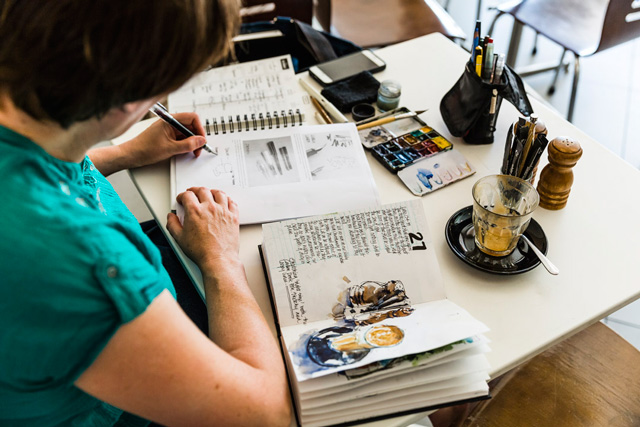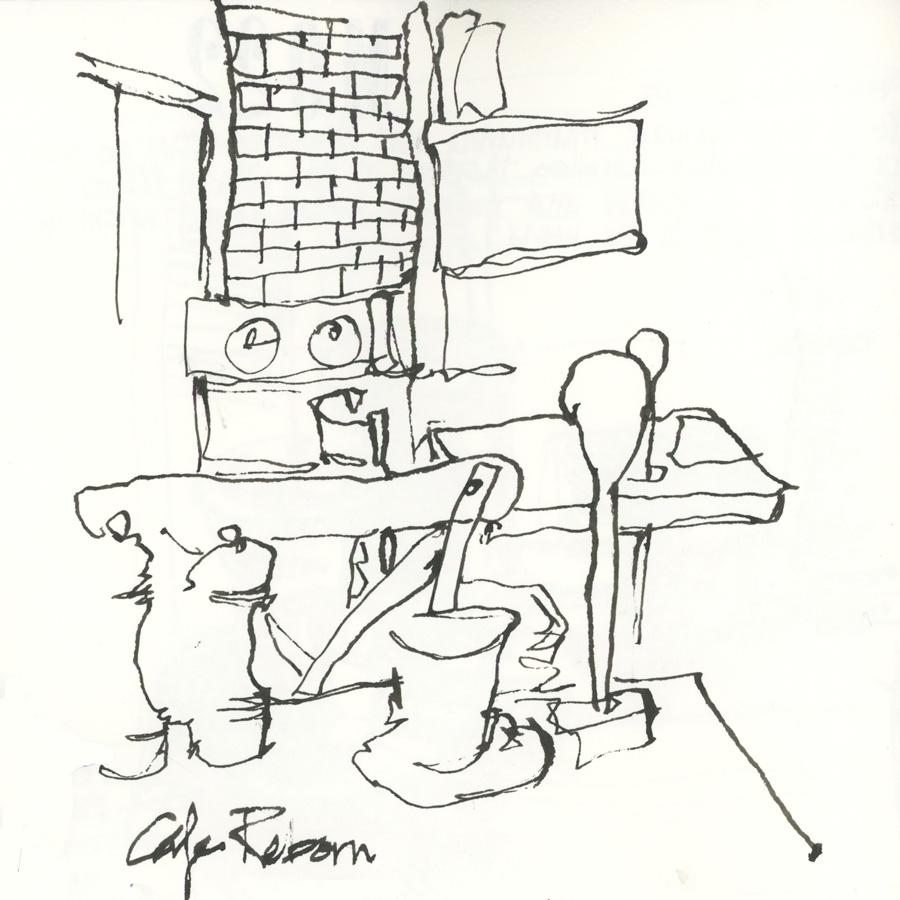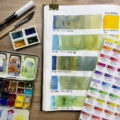I know that I’m mostly known for 1. my teacup/coffee cup sketches and 2. my urban sketching. People often think that the two are connected. But in fact they are not!
My teacup sketches are done at home (not out on location) and my coffee cup sketches, although done in a public cafe, are simply a morning ritual I go through to get my creative juices pumping. Neither of these are urban sketches.
I’m a big supporter of the Urban Sketchers organisation, and love that the manifesto has defined a clear goal for what it stands for. It defines the distinctives, and these make Urban Sketchers special. The most fundamental part of the USK manifesto is that our work is done on location, but an equally important part is that our sketches tell the story of where we are. So sketches of isolated objects without any context don’t tell a story, and this is why my usual floating coffee cup sketches aren’t actually urban sketches.
The USK Manifesto
- We draw on location, indoors or out, capturing what we see from direct observation.
- Our drawings tell the story of our surroundings, the places we live and where we travel.
- Our drawings are a record of time and place.
- We are truthful to the scenes we witness.
- We use any kind of media and cherish our individual styles.
- We support each other and draw together.
- We share our drawings online.
- We show the world, one drawing at a time.
Sketching my life
It’s totally okay that my coffee cups are not urban sketches as I do a lot of sketching outside of the definition of urban sketching.
I sketch objects at home and occasionally do sketches from photos as training exercises, to remember past memories, to record future plans or as a way of documenting what I’m reading. I much prefer to sketch on location and to complete my work at the time, but sketching at home is a big part of recording my life. So urban sketching is just one aspect of my work.
Urban sketches in cafes
My morning cafe visits are primarily work sessions not urban sketching outings.

I paint my coffee (as a mental warmup) and then start working (planning in my bullet journal, reviewing handouts or working on my laptop) so I often don’t do anything more in the sketchbook.

If I wanted my cafe visit to be an urban sketching outing I would include some story, some context, to explain where I was. I could draw the coffee cup in the context of what else was on the table, with possibly a few lines to connect the table with other elements in the cafe.

I could also do a separate scene of the cafe – this is what I normally do.
I frequently discuss this topic in face to face conversations and when teaching urban sketching workshops I always try to include the idea of story. It’s also a common theme in my online courses (Foundations Lesson 10, Watercolour On Location Lesson 1) but I hadn’t realised until recently that I’ve never written a blog post about it.
I really love the storytelling through sketches aspect which Urban Sketchers emphasises! It’s certainly something that I’m working on all the time.
How can our sketches be better and
- tell the story of our surroundings, the places we live and where we travel
- record of time and place
- show the world?
Thinking about these questions and also what interests you the most about a scene will make your sketches more interesting and stronger.
A few cafe sketching ideas
I know when you are starting urban sketching it can feel overwhelming to draw a big scene. But you don’t have to draw everything!

It’s still okay to start your sketch with an object or two, but add a few lines to provide some story. Taking the time to carefully observe a few lines to create context is fantastic training for more complex scenes. Slow down and carefully observe where these lines intersect with your object. There are a lot of very important skills that can be developed from these type of sketches – you will begin to understand perspective and depth.

And if you want to draw a bigger scene such as a cafe, remember that you don’t have to draw everything. I love using a simple continuous line to jump between objects creating an expressive and open-ended sketch telling a personal story about what interested me in the scene.

I particularly like this technique when drawing carparks and other really ordinary scenes. It’s a really fun technique and also produces sketches with strong stories.

And if you want to try something even more fun try just painting a few interconnecting shapes.

Otherwise, if you want to do a more traditional ink and wash sketch, I suggest sitting more or less straight on to the main counter and drawing the details.
Here are a few more examples – I have many to choose from!
I hope these examples encourage you to get out on location and tell stories through your sketches. Have fun!
Further Reading:
- Different stories about the Callanish Stones, Isle of Lewis
- Using thumbnails to explore story options
- More articles about thumbnails











3 Comments
When I think of Liz I think of the warmth and generosity of you as a person. I think of passion, drive and enthusiasm and how someone taught me to sit on the ground and truly see perspective all with a sense of humor. Thank you.
I was never confused — especially as you usually talk about a new or favorite teacup from your collection.
But I do take issue with the words of the USk manifesto and the reality of how it works. What if your world is your home — what if you never leave? These things still hold true, especially if it is not just an image of your cat or teacup, but your breakfast nook and view, etc. Yet these are removed from the USK FB site. I learned this when I was on my back for three months recouping. IF I’d been in hospital perhaps they would have approved my art. Bored I was, but still drawing. And my drawings of what I could see — the whole room — were not acceptable.
1. We draw on location, indoors or out, capturing what we see from direct observation.
2. Our drawings tell the story of our surroundings, the places we live and where we travel.
3. Our drawings are a record of time and place.
4. We are truthful to the scenes we witness.
I am entirely agree with you, Kate, because I was back operated, so I knew this situation : being at home, and drawing what you can !
NEWSLETTER
Subscribe for first notification of workshop + online classes and more.